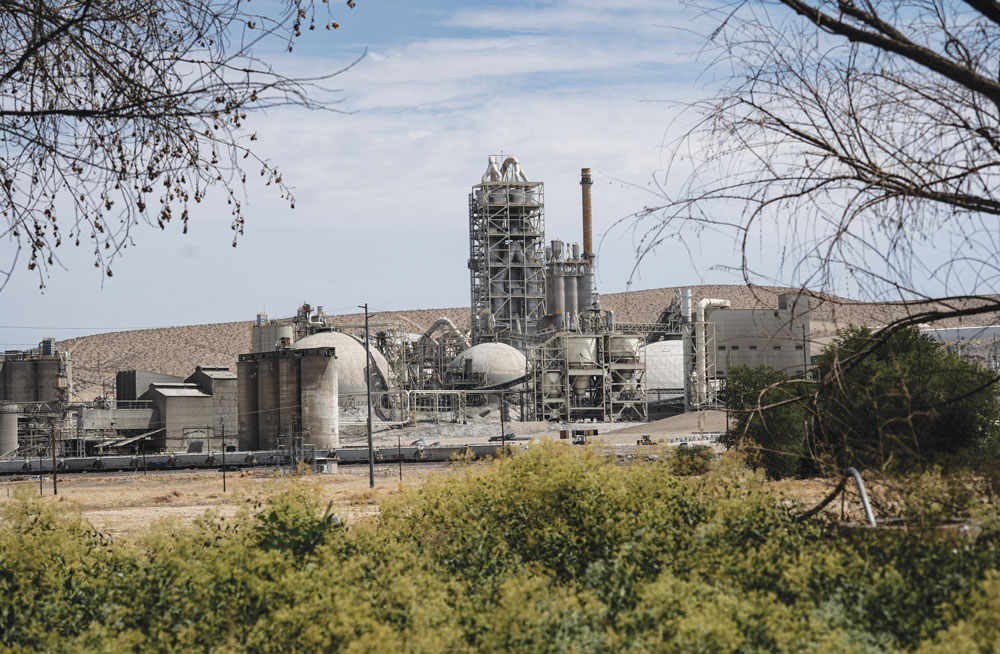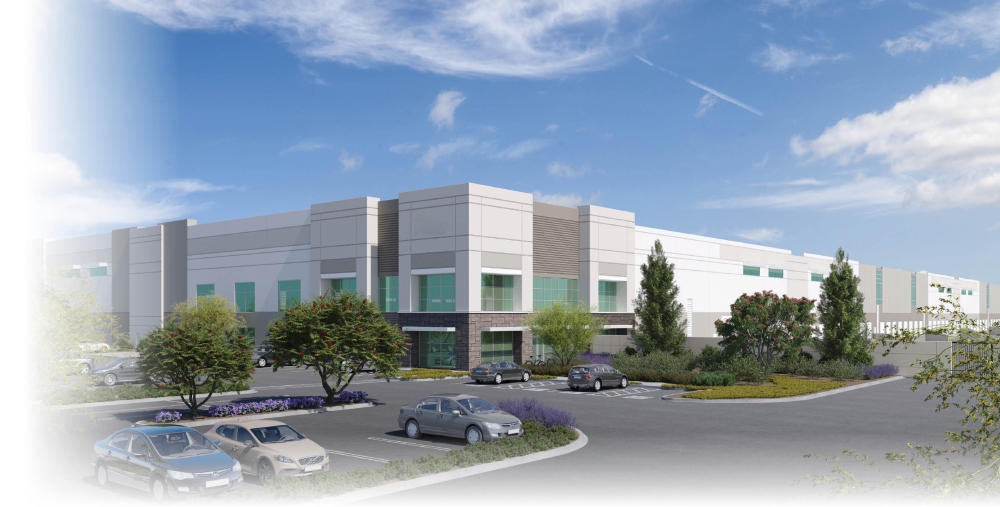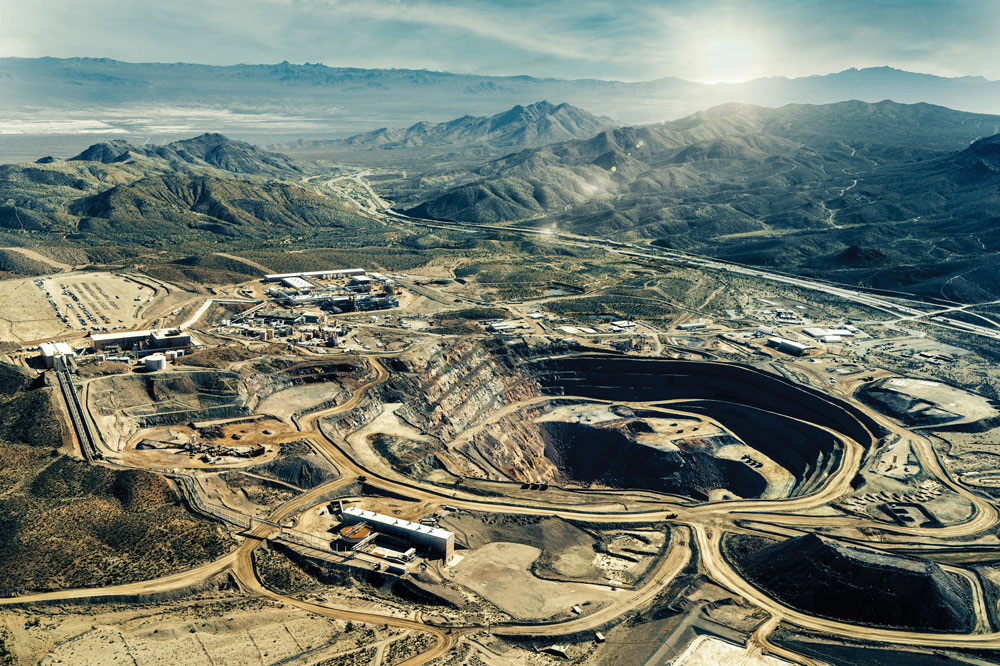The mining industry highlights the national value of the Mojave Desert.
When MP Materials announced on July 10 that it had secured a multi-billion-dollar deal with the U.S. Department of Defense to supply the U.S. Armed Forces with rare earth materials, the move signaled the latest transformative chapter in the ever-expanding critical mining sector of San Bernardino County in Southern California.

By significantly ramping up production of its mining and processing operations in Mountain Pass in the desert region of eastern San Bernardino County, MP Materials will become a crucial supplier of rare earth magnets to the DoD for at least the next decade. The agreement reduces foreign dependency on this essential infrastructure and ensures a strengthened U.S. leadership position globally in this highly competitive industry.
Once the new $1 billion “10X Facility” is constructed, it will serve both defense and commercial customers after it becomes operational in 2028. With the expansion, MP Materials’ total U.S. rare earth magnet manufacturing capacity will reach an estimated 10,000 metric tons. The firm will also add heavy rare earth separation capabilities at its Mountain Pass site.
“This initiative marks a decisive action by the Trump administration to accelerate American supply chain independence,” said James Litinsky, founder, chairman and CEO of MP Materials. “We are proud to enter into this transformational public-private partnership and are deeply grateful to President Trump, our partners at the Pentagon and our employees, customers and stakeholders for their unwavering support and dedication.”
MP Materials operates the world’s second-largest rare earth mine in Mountain Pass along Interstate 15 about 15 miles from the Nevada border. MP extracts, refines and separates rare earth materials at this site. The firm is also commissioning a magnetics facility in Texas, known as Independence, to anchor its downstream capabilities.
Improving America’s independence and competitiveness in rare earth production is just one component of the mining industry in San Bernardino County. According to Robert Dugan, president and CEO of the California Construction and Industrial Materials Association (CalCIMA), the mining industry has been a mainstay of the Southern California economy since the 1860s.
The Golden Ticket: Sustainability
“California had more than one gold rush,” says Dugan. “Not long after gold was discovered in the Sierra Nevada Mountains, gold was discovered in Southern California in the 1860s. That’s when they found silver, copper and iron here. As the precious metals boom waned, we saw diversification in mining in San Bernardino County. The rock, sand and gravel industry formed here because it was great for making roads. And then rare earth minerals were found in the county in the 1950s.”
A breakthrough came in 1975 when California adopted the State Mining and Reclamation Act.
“San Bernardino County embraced it because they are critical resources for civilization,” Dugan says. “You cannot build technology without these rare earths. We had county leaders involved in the statewide group. Mining has evolved here ever since. It percolated and continued to grow. San Bernardino County now is the heartbeat of the diversity of minerals in the West.”
Dugan credits county leaders with adopting a sustainable approach to mining. “They created local legislation to make sure we could extract these minerals and then reclaim the sites. They did that in a very proactive way to protect the public interest,” he says. “It is because they have clear laws and rules and are consistent in their application. It is a very predictable local government model.”
Because of the county’s approach to governance, says Dugan, he expects to see further expansion in mining. “Because of San Bernardino County’s unique plethora of resources, the county has a great opportunity. In addition to supplying the base materials, they have a huge resource of precious metals. This includes increases in gold mining opportunities and others. We will see more of these metals come online soon.”
According to a recent San Bernardino County government report, total mining and natural resources employment in the county stands at 6,974 jobs, with a 5-year forecasted employment growth of 5% and a 10-year forecasted growth of 10.2%.
San Bernardino is the largest mining county in California with more than 90 active sites. Its active mines include the Colosseum Mine in the Mojave National Preserve, where gold was discovered in the 1860s. Owner Dateline Resources is reactivating the mine after it had been dormant for decades.
The firm’s goal is to extract $270 million in gold annually and employ hundreds of workers in high-wage jobs during construction. They will also dig for rare earth elements, setting the stage for a larger supply chain for rare earth production in the county. Colosseum is located just miles from the Mountain Pass site operated by MP Materials.
MP, meanwhile, now accounts for more than 10% of the world’s supply of rare earths. MP employs 650 workers in the county and partners with Baker Valley Unified School District to streamline career pathways for students at the MP Materials site at Mountain Pass.
Looking for gold in “them thar hills”? In that case, try the Castle Mountain Gold Mine in eastern San Bernardino County. Over 1 million ounces of gold were produced in 2004 until initial operations were suspended. Castle Mine resumed mining in 2020 under owner Equinox Gold, which is now expanding production to extract about 200,000 ounces of gold per year. This is expected to make Castle Mountain the largest gold producer in California.

A heavy hauler dump truck carries rock, sand and gravel at the CalPortland Company mine in Oro Grande.
Photos courtesy of CalPortland Company

Photos courtesy of CalPortland Company
Cementing in Place a Net Zero Mine
Of course, you can’t operate mines unless you build the roads needed to support the largest work trucks on the planet. And to do that, you need companies like CalPortland. Founded in 1891, CalPortland is the oldest portland cement-producing operation west of the Rockies. The firm employs over 160 workers at its Oro Grande Cement Plant making cement, concrete, aggregate, asphalt and other building materials.
CalPortland keeps growing because it continues to build its talent pipeline in the county through programs such as the Mountain Desert Career Pathway and the Mojave Environmental Education Consortium. Its strong commitment to environmental sustainability is a big reason why it is the only building materials company in the country to receive an Energy Star rating for sustainable practices for 20 years running.
Sarah Alvarado, community affairs manager for CalPortland Company, says, “Our Oro Grande plant is our busiest cement producing plant. We have three plants in California. This is a never-ending business. It is 24/7/365. We provide cement for housing foundations. Our other two plants are in Mojave and Redding.”
CalPortland also operates a cement plant in Rillito in Pima County, Arizona, as well as ready-mix facilities and terminals in California, Washington, Oregon, Nevada and Arizona. Company-wide, the Nevada-based firm employs 3,500 workers.
“Our cement plant has 150 employees in San Bernardino County,” says Alvarado. “We also have salespeople in the region. We have a great recruitment team that is always looking for talent in labor and other more technical positions like mechanical engineers. We work with a local staffing company called ICR Staffing to help us recruit. We do all the training here at our company. We do truck driving and loading training in house too. I am also working to develop a strong partnership with the San Bernardino County Workforce Development Program to recruit more employees.”
Located on the outskirts of Victorville, Oro Grande is a very old mining town, says Alvarado.
“We are in a pretty densely populated area of the High Desert that is booming,” she notes. “There is more affordable housing here. The workforce usually commutes down the hill through the Cajon Pass and the 15 Freeway. Being able to recruit locally helps us find and hire good talent.”
What also helps is the fact that “mining jobs pay very well,” Alvarado adds. “In mining, there is something for everyone. We pay livable wages, and you don’t have to have a four-year degree. You can make good wages as a welder, electrician or other technician.”
Alvarado adds that CalPortland takes pride in its commitment to community engagement. “That is my specialty,” she says. “We are always looking to support our communities. That is our responsibility. That is one of the things I have been most impressed with — giving back, sponsoring parades, helping with educational efforts, etc. We are always giving back with volunteers. We give school tours to people of all ages.”
She says part of her job is to educate people on how clean and eco-friendly mining can be, if it is done the right way. “We are working toward becoming net zero as a company by producing a lower-CO2 cement,” she says. “Case in point is our Advancement HPT or High Performance Ternary — a high-performance blended cement. It is cleaner and requires less carbon to make it.”
For San Bernardino County, building blocks like that are the future.

This Investment Profile was prepared under the auspices of San Bernardino County. For more information, contact the County’s Economic Development Department at 909-387-4460. On the web, go to www.SelectSBCounty.com.

Apple Valley logistics facility, a project of Uncommon Developers, has over 1 million sq. ft. of high-end warehouse space in the High Desert.
Rendering courtesy of DAUM Commercial Real Estate Services
A New Logistics Solution in the High Desert
In the High Desert region of northern San Bernardino County, keeping up with production means building more warehouses. No one knows that any better than Dan Foye, executive vice president and principal of DAUM Commercial Real Estate Services. His firm is leading the leasing for a brand-new industrial center that was just fully entitled in Apple Valley.
The building, Apple Valley One Million Distribution Center, is the first phase of what will be a 550-acre master-planned development project by Los Angeles-based real estate group Uncommon Developers, according to Rick John, executive vice president and branch manager at DAUM’s Inland Empire Office.

Dan Foye is EVP of Daum Commercial Real Estate Services
“The Apple Valley One Million Distribution Center’s features and location, including its expansive footprint, modern infrastructure and excellent connectivity to major transportation routes, will support large-scale distribution, manufacturing and logistics operations,” says John.
“San Bernardino County’s High Desert North region is attracting industrial development due to the business-friendly environment and growing skilled labor pool it offers, while still being within 100 miles, or under a two-hour drive, to the Ports of Los Angeles and Long Beach,” says Foye. “More affordable land and lease rates compared to Los Angeles and other Inland Empire markets and reduced congestion drive cost savings and efficiencies for developers, owners and occupiers.”
John notes that in addition to providing access to Interstate 15, State Route 18 and U.S. Route 395, the development is near Southern California Logistics Airport, a major cargo hub with air freight capabilities, and the upcoming Barstow International Gateway, which will be a 4,500-acre integrated rail facility on the west side of Barstow.
“The positioning of this property in Apple Valley facilitates highly efficient regional and national distribution capabilities,” said John. “The facility is an exciting part of the growth and economic development of the High Desert, and what is planned to ultimately be a 550-acre project leveraging the location, scalability and access to power rare for the market.”
Apple Valley One Million Distribution Center is planned to have a total building area of 1,080,078 sq. ft. with 40-foot minimum building height, 219 dock-high doors, four ground-level doors, EV charging stations for cars and trucks, 8,000 amps of power expandable to 16,000 amps, and office and mezzanine space situated on a 72-acre site with ample car and trailer parking.
“This building was fully entitled by the owner for their own use as a toy manufacturing company, but then they realized they did not need the extra space. It has extra power. It is part of a 550-acre project we sold them in 2022,” says Foye. “This is just the first phase. It is for industrial use. It is rare to find a permit-ready facility of this size in the Valley.”
Why here and why now? Foye says the answer is simple: “It’s hard to find any industrial land that you can build on in the region; and over a half-million people live in the High Desert. Apple Valley, Victorville and Hesperia are among the most super-commuting towns in America — places where people drive over 90 minutes to work. This gives them a chance to stay home for a good job. In short, there’s hardly anything like this in the Inland Empire.”

